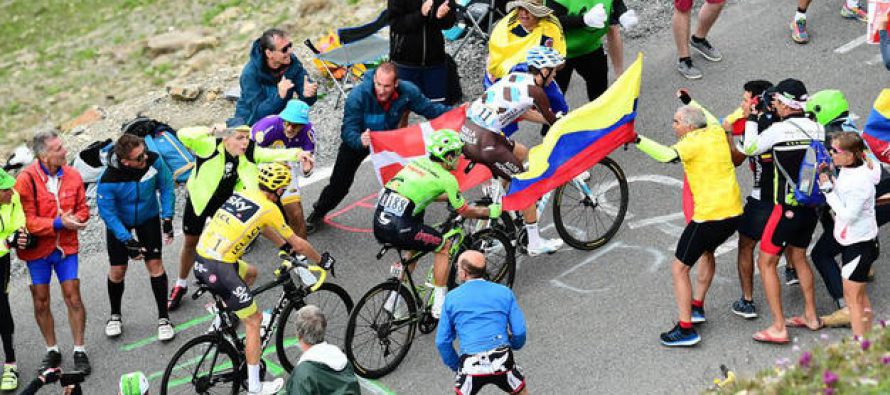The Tour de France is underway and you’ve just come upon our guide to when this thing could hatch and who’ll be left with egg on their face.
The competition
The Course
This year’s Grand Depart is on the Western France island of Noirmoutier in the Vendee region of France.
Stages One & Two
The first day’s ride heads down the Atlantic coast of France, hugging the coastline for most of the day before turning inland at La Faute-sur-mer and heading towards the finish in Fontenay-Le-Comte.
The flat terrain along this 189km stage is likely going to lead to a bunch sprint finish and a sprinting specialist to end up in the yellow jersey. However, there is a chance that high winds blowing off the Atlantic may cause the peloton too split into echelons and large time gaps to develop.
Stage Two heads north as the riders take a 183km ride from Mouilleron-Saint-Germain to La Roche-Sur-Yon. The challenge for this day comes in the final kilometre or so with a 4% incline to the finish. This stage will better suit powerful riders over pure speed demons.

Stage Three
The 35km Stage Three team time trial is the first point in this race where we will begin to see some riders rise to the top. the rules of this stage state that each team rides the course as one and all eight riders get the same time as the fifth member of that team to cross the line.
Stages Four to Nine
Stage Four is another flat stage, set to run through cycling heartland, Brittany.
Stages Five and Six will be the riders’ first taste of the climbs that cause the peloton to shed sprinters. Puncheurs will be looking forward to getting their time up the standings and will take advantage of the rolling hills through the Brittany region.
For Stages Seven and Eight we’re back to to the flatter terrain where bunch sprints are likely to return before Stage Nine takes the peloton to Roubaix. Along the way, they will cross 15 cobbled sectors, totalling 22kms. That’s more cobbles than has been the last five Tours.
Stages 10 to 12

The riders will enjoy a much-needed rest day following the first week as immediately following that day they get set for their first climb into the Alps of South-Eastern France.
The following two stages both have summit finishes. First, the riders will summit the La Rosiere on the 11th day of riding before tackling the infamous Alpe d’Huez on day 12. By this point in the race, the yellow jersey contenders will be whittled down to a select few.
Stages 13 to 15
The powerful riders will be glad to hear that on these days the tour returns to flatter lands. It starts off with a stage for the sprinters who will fight through the fatigue of the mountains as the peloton rides towards Valence in inland France. However, the sprinter’s paradise will not continue for the rest of the second week as the race is set for some hilly riding better suited for the Puncheurs.
Stages 16 to 19
After two gruelling weeks of Tour de France riding, the peloton must gear up once again to tackle three mountain stages in four days. On the 16th the riders leave France for the only time on this year’s Tour to tackle the Spanish side of the Col de Menté before a descent to the finish.
Stage 17 of this year’s Tour is the shortest Tour de France stage in four decades. Riders will be climbing right from the start as they look to tackle three different summits with a finish on top of the Col du Portet.
Race organisers have thrown a curveball at the peloton with a Formula 1 style starting grid. The first 20 riders in the GC standings will line up with the yellow jersey in poll position.
If you watch one stage of this year’s Tour make it this one. Short climbs in the dying days of a competitive Grand Tour are often jam-packed with action as riders look to pull back whatever time deficit they have to the leaders
Stage 18 is another day for the sprinters before a return to the mountains for Stage 19.
Stages 20 and 21
Just like last year, the penultimate stage of the tour will be an individual time trial. This year, it’s the 31km ride from Saint-Pée-sur-Nivelle to Espelette in South-Western France.
We are sure to know the 2018 Tour de France winner – barring any serious misfortunes on the last day – as the ride into Paris and along the Champs-Elysees is treated as a procession with the unwritten rule that no rider attacks the leader’s jersey.
Instead, you see him and his team all decked out in yellow, sipping wine as riders move all throughout the peloton to celebrate making it to Paris before the sprinters turn up the heat and look to clinch a win at the most famous finish line in the world of cycling.
Chris Froome has to be the favourite by far to win the 2018 Tour, but this year it looks like he has a pack full of potential riders to contend with.
Last year’s runner-up Rigoberto Uran returns after taking the Giro d’Italia off earlier in the year.
Adam Yates of Mitchellton-Scott will also tackle the Tour having skipped a Giro where his twin brother, Simon, dominated the first two weeks.
Tom Dumoulin has said he is coming to the Tour de France for the experience but if he is hanging around the yellow jersey by the time they arrive for the time trial then he’ll be a hard guy to beat.
Dan Martin and Fabio Aru were both in the thick of things 12 months ago before a back injury to Martin and fatigue caught up with the pair.
Feature image: Flickr


